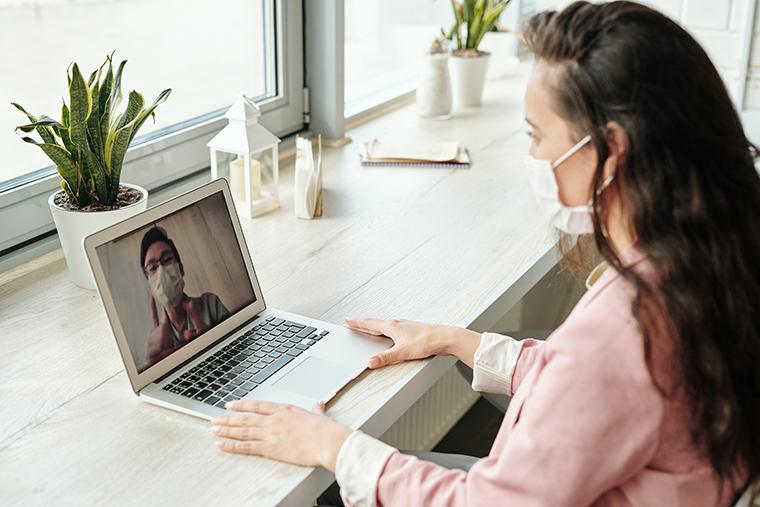
Answering the Call
In this time of crisis, SCU Public Health students take on work as contact tracers to slow the spread of COVID-19 in Santa Clara County.
By Taylor Pavicich ’21
In today’s world, the realities of a global pandemic have infiltrated daily life—keep socially distanced, wash your hands, wear a mask. There aren’t many people who haven’t been affected, in one way or another, by COVID-19, and in true Santa Clara University fashion, many students found themselves wanting to help counter the pandemic in any way they could. Increasingly important to combating COVID, as countries around the globe have demonstrated, is contact tracing. With effective contact tracing which has become a common public health process to identify those who have come into contact with the virus, communities can reduce its spread.
Enter Santa Clara County. Shortly after the pandemic broke in the U.S., an alumnus who works at the county reached out to SCU’s Public Health Program with an opportunity for students to carry out the work of contact tracers. “I first had an interest in contact tracing because I wanted to help my community and also use some of the skills I've learned as a public health major,” stated Joe Lopez ’21, a Biology and Public Health Science double major. Like Lopez, many students wanted to put the knowledge they’ve gained to use. Jumping at the chance to contribute, fifteen students joined the county’s workforce for the summer.
Training for the contact tracers consisted of fifty hours of a UCLA certification course accompanied by thorough training sessions from the county. The UCLA course encompassed a hybrid format, where the trainees had self-paced modules to complete in addition to a week of training on Zoom that focused on confidentiality and the importance of contact tracing. Public Health Science major Lilly Evans-Riera ’23 noted that they learned about different types of public health interventions and were prepared for the reality that minority or lower-income populations often face more difficulties in terms of accessing healthcare.
While these concepts parallel the topics discussed in public health courses at SCU—which challenge students to take the information they learn and apply that knowledge to improve the health of others in their community and the world—the hands-on experience enabled students to witness the profound reality of the public health crisis. “It is one thing to study disease outbreaks, but another to speak with people diagnosed with COVID and hear about their individual experiences,” stated Evans-Riera on her work as a contact tracer.
As a case investigator and contact tracer for Santa Clara County, Kristen Albi ’21, a Neuroscience and Public Health Science double major, explained how her role is to call individuals who have just tested positive, or who have had close contact with someone who has tested positive, for COVID-19. The calls consisted of going over isolation protocols, how to stay safe after their isolation window, and even how to properly wear masks. Lopez, who was involved in similar work, explained, “I would ask the caller to retrace their steps two days before their testing date, with questions to jog their memory, such as if they’ve worked recently or if they’ve been with any close friends or family members.”
Contact tracing in Santa Clara County has gone beyond trying to slow the spread of the virus, by also helping people who are experiencing this difficult time in various ways. Many of the daily calls are made to people who are unable to speak English, and because of this, nearly half the student contact tracers can speak another language. Calls are also made to those in need of food delivery services and some who are merely in need of comforting words. Albi expressed how “the process is still very new to me, with a different experience every day, but the importance of contact tracing also becomes more evident with these experiences. This kind of work is exactly what Santa Clara’s Public Health curriculum is working to prepare students for.”
From the beginning, classes such as Introduction to Public Health call students to understand the challenges other individuals and populations face and teach students how to develop new ways to improve the systems that limit health. Albi claims that this is exactly what contact tracing is about—“taking on whatever novel challenges your contact or case is facing and quickly coming up with the best way possible to help them receive the help they need.”